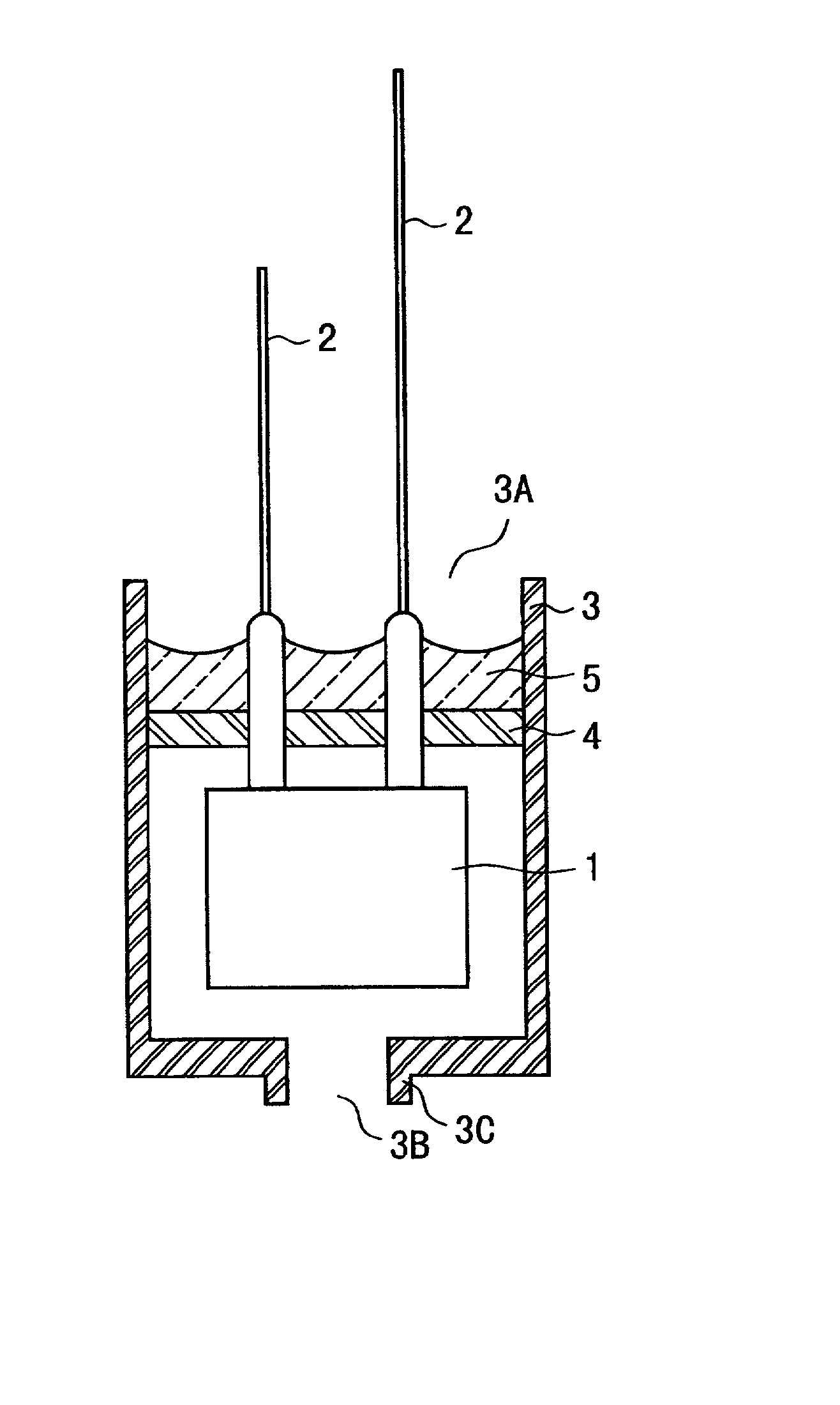Method of manufacturing an aluminum solid electrolyte capacitor
a manufacturing method and capacitor technology, applied in the manufacture of electrolytic capacitors, variable capacitors, electrolytic capacitors, etc., can solve the problems of easy cracks in the oxide film on the positive electrode, high probability of short-circuit mode faults, and fire in electronic equipmen
- Summary
- Abstract
- Description
- Claims
- Application Information
AI Technical Summary
Problems solved by technology
Method used
Image
Examples
Embodiment Construction
[0170] 60 samples were prepared by the steps of:
[0171] adhesion of coiled elements with epoxy resin followed by curing in cases 3 of external dimensions 3.6 (mm).times.3.6 (mm).times.9.8 (mm);
[0172] performing two cycles of repeated chemical conversion by the means described above;
[0173] impregnating with a solution obtained by dissolving 20 (%) of 3,4-ethylenedioxy-thiophene in ethanol by the means described above, then drying;
[0174] impregnating with a solution obtained by dissolving 50 (%) of iron (III) p-toluenesulfonate in n-butyl alcohol to form the solid electrolyte, etc.
[0175] When determinations were carried out on all these samples, excellent results were obtained in that only three samples were deemed to be defective since their equivalent serial resistance (ESR) at 100 (kHz) exceeded 150 (m.OMEGA.), the remaining 57 samples being good products.
[0176] From among the good products, 10 products were randomly selected and reflow soldering performed on these. When a life test...
PUM
| Property | Measurement | Unit |
|---|---|---|
| Current | aaaaa | aaaaa |
| Digital information | aaaaa | aaaaa |
| Pressure | aaaaa | aaaaa |
Abstract
Description
Claims
Application Information
 Login to View More
Login to View More - R&D
- Intellectual Property
- Life Sciences
- Materials
- Tech Scout
- Unparalleled Data Quality
- Higher Quality Content
- 60% Fewer Hallucinations
Browse by: Latest US Patents, China's latest patents, Technical Efficacy Thesaurus, Application Domain, Technology Topic, Popular Technical Reports.
© 2025 PatSnap. All rights reserved.Legal|Privacy policy|Modern Slavery Act Transparency Statement|Sitemap|About US| Contact US: help@patsnap.com



